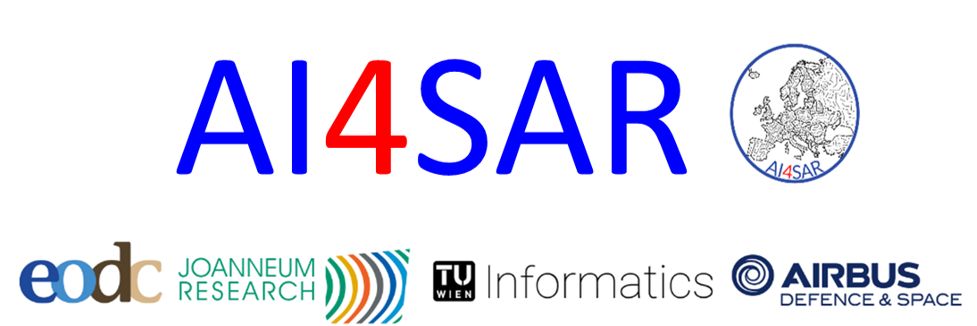
AI4SAR
Artificial Intelligence for Advanced SAR Processing
The usability of Synthetic Aperture Radar (SAR) satellite data depends on the correct interpretation of the underlying scatter mechanism, where current modelling approaches perform poorly or fail. Within the proposed project AI4SAR, different state-of-the-art artificial intelligence (AI) algorithms based on unsupervised, active and knowledge-based learning are further developed to find a data-driven solution for this impressive challenge. The AI-based separation of different scattering mechanisms then allows optimised SAR despeckle filtering, interferometric phase preservation, SAR-to-optical matching, and in general advanced SAR processing. The AI4SAR developments will be demonstrated with the help of different use cases in the fields of forest monitoring, deformation monitoring and ground control point transfer. The developed AI solution will be embedded in the Big EO (Earth Observation) data processing environment operated by EODC (Austrian Earth Observation Data Centre) to utilise further research and to disseminate the AI4SAR SAR processing methods and results within the existing currently freely available Austrian Data Cube (ACube) service and the whole EODC partner and customer network.
AI4SAR suggests developing and applying different artificial intelligence (AI) algorithms based on unsupervised, active and knowledge-based learning to be utilised for the advanced pre-processing of SAR data. The developed prototype solutions shall consider different scattering mechanisms with respect to land use resp. land cover. Moreover, the approach shall incorporate various learning strategies into standard SAR-based applications, like SAR interferometry or SAR-to-optical point matching. Machine learning (ML), and in particular deep learning, will also be applied for advanced ground control point transfer. The resulting novel opportunities will be demonstrated with three different use cases in the application areas of (1) enhanced SAR-based forest products, (2) SBAS-based deformation monitoring, and (3) ground control point transfer.

